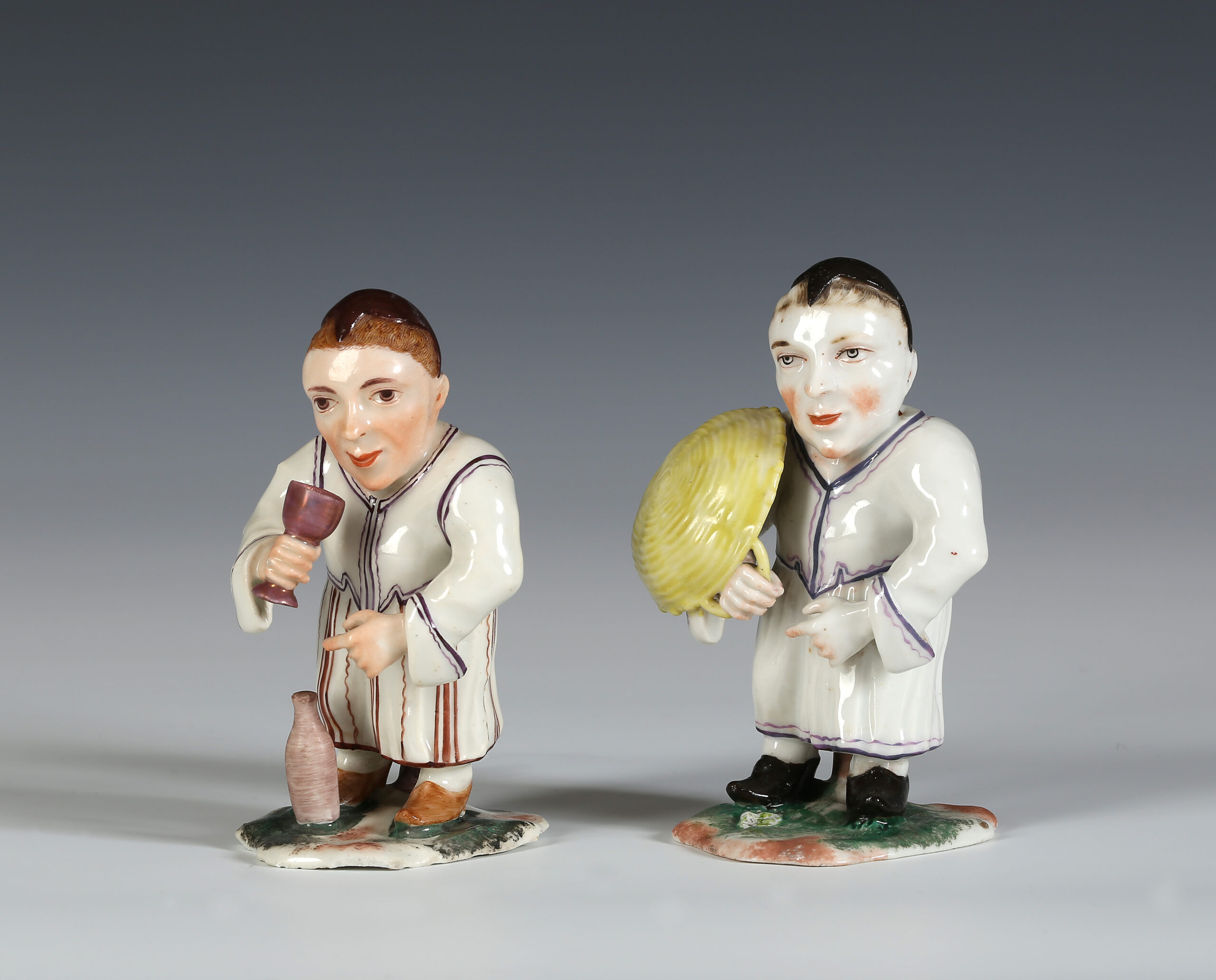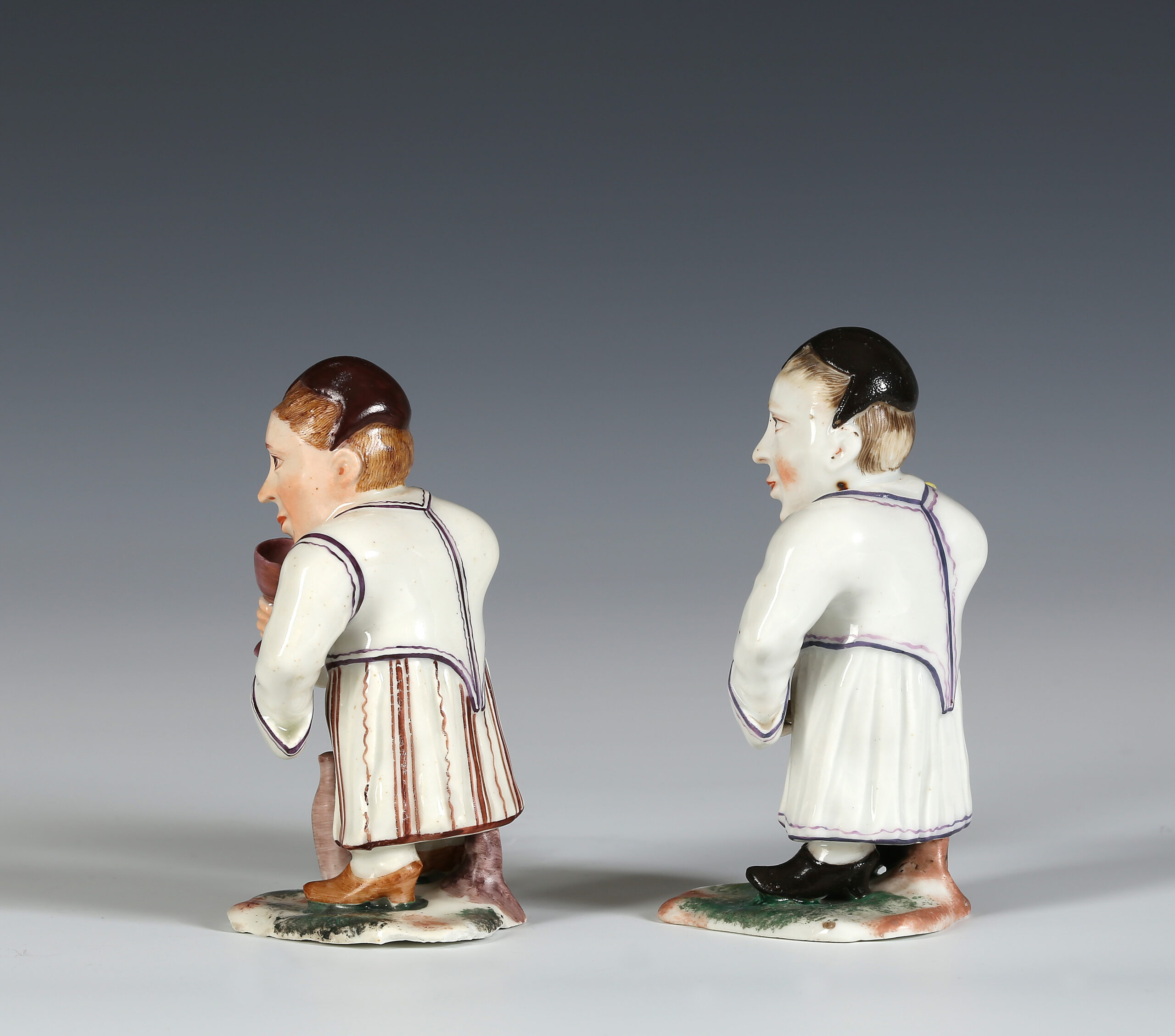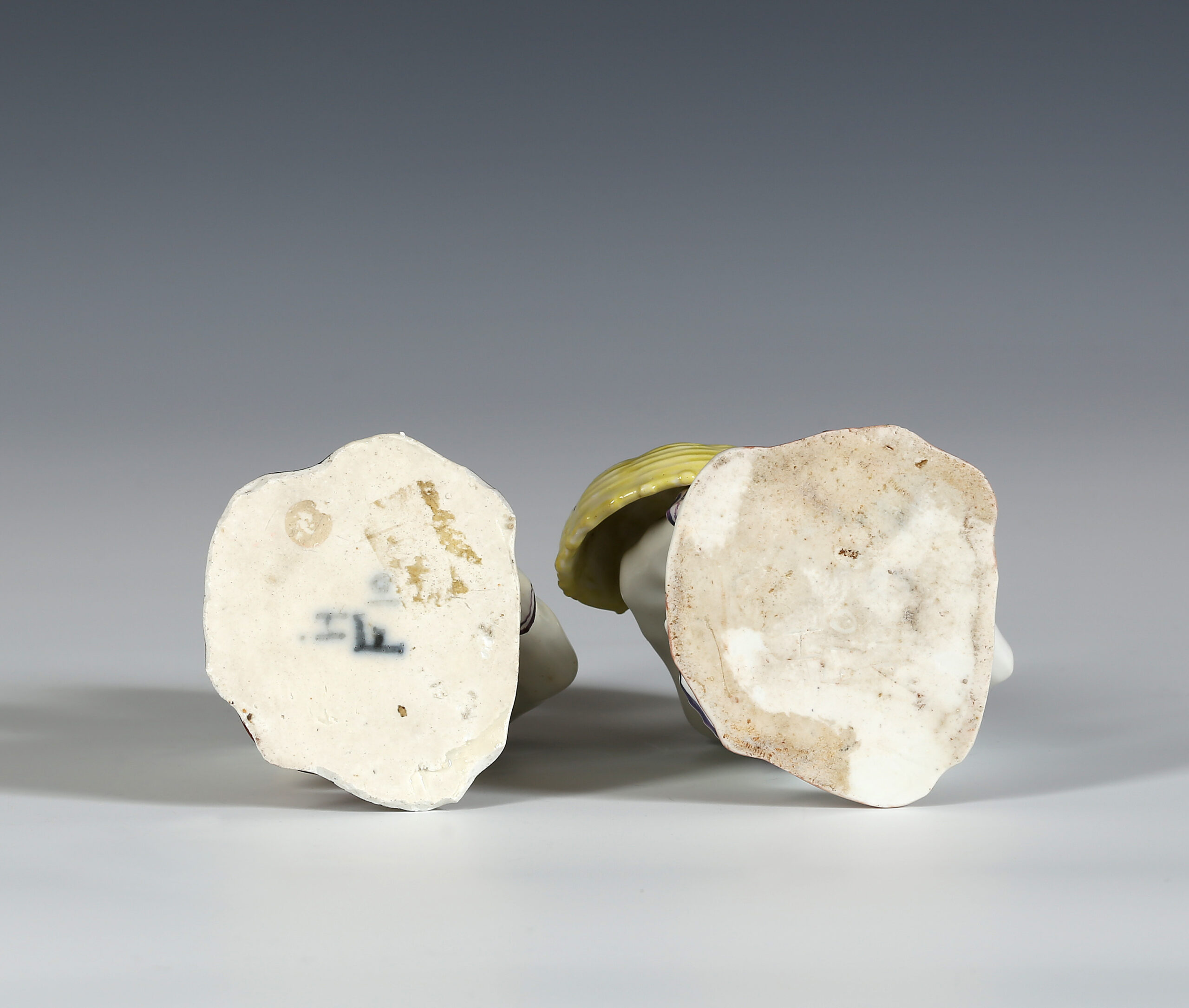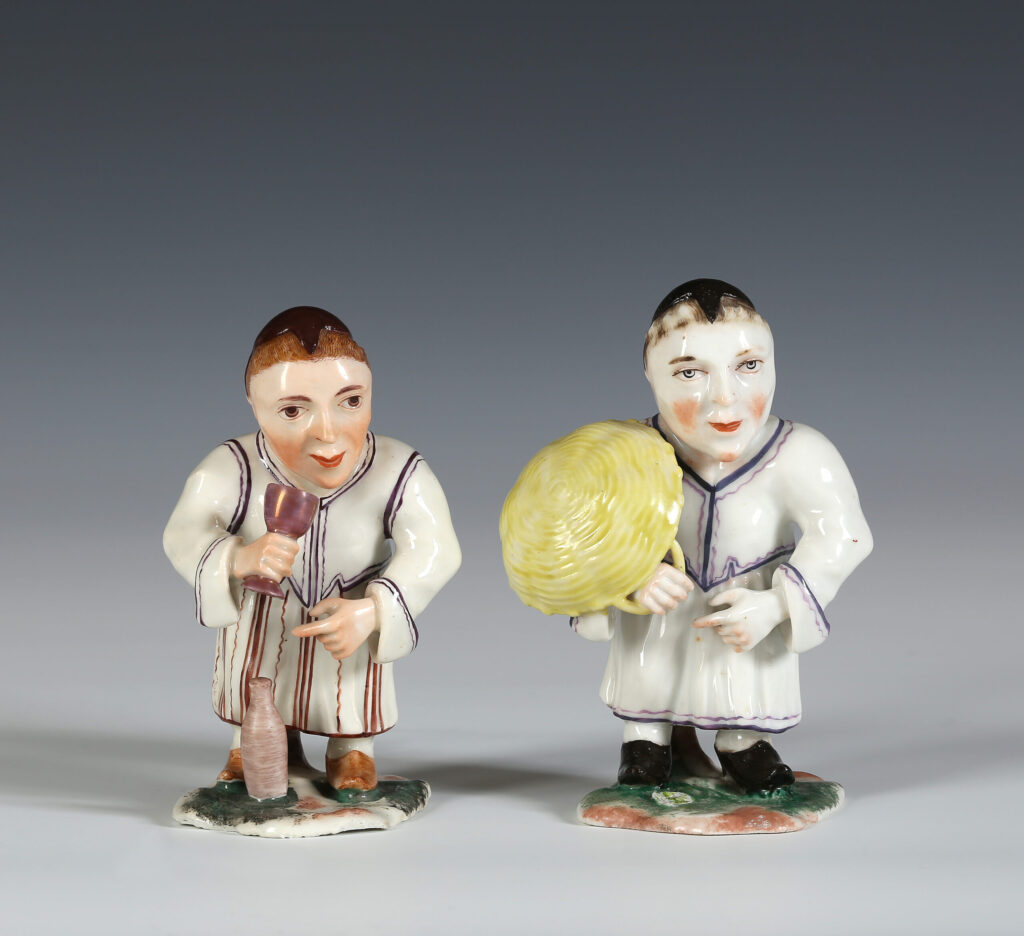
These two dwarfs wear the distinctive peaked cap, or schnepp, traditionally worn by the ladies of Strasbourg and other towns of Alsace. Only two other figures from the series are known, both in the Musée National de la Céramique, Sèvres[1].
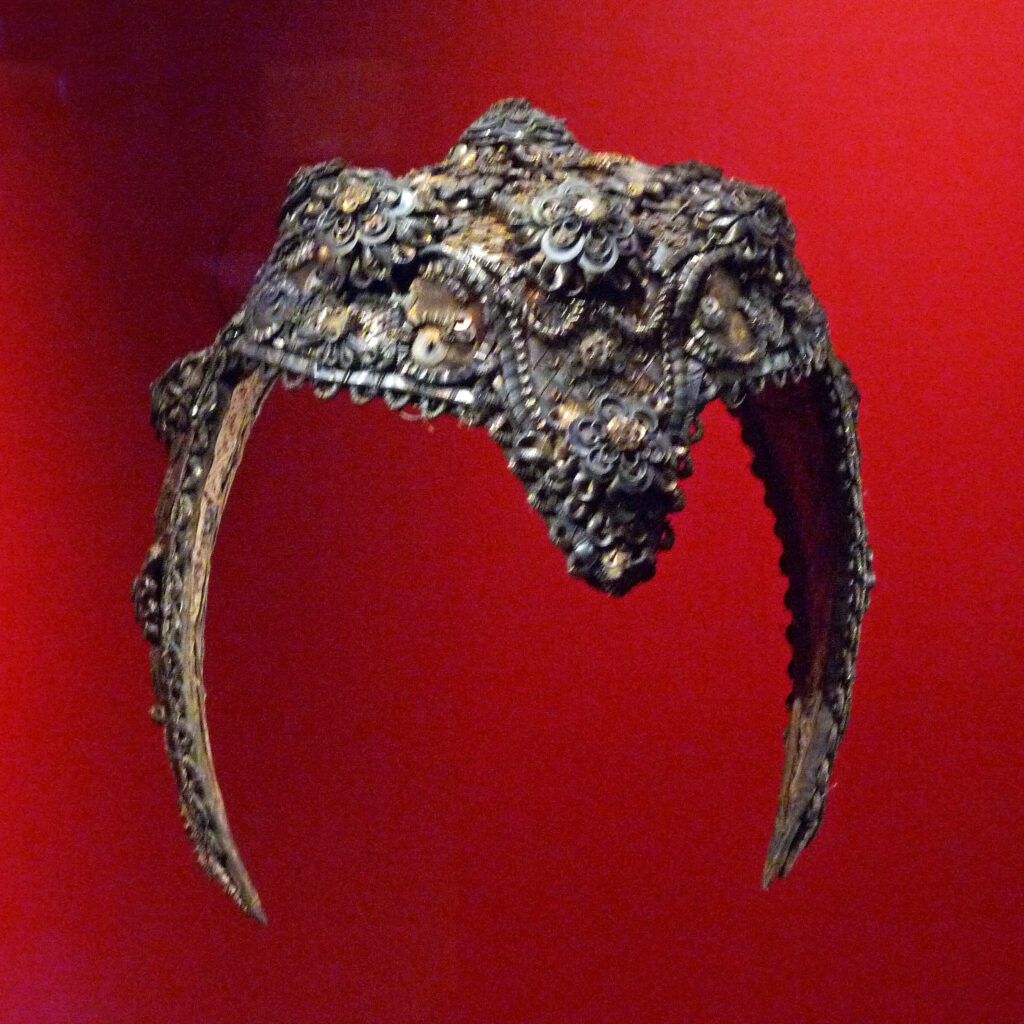
A ‘schnepper strasbourgeois’, Musée Historique de Strasbourg
The schnepp or, in French, le Schnepper, was a round cap with three spikes that protruded over the top of the head and temples. They were often richly adorned with gold and silver and became a symbol of identity and wealth for upper class women of Alsace.
Wearing the schnepper required having the hair pulled back, leaving the face and neck clear. This was in contrast to the practice elsewhere in France, where curls and frizzes were in fashion. Travellers were sometimes unimpressed, a Russian, Nikolaï Karamzine, visiting Strasbourg in 1789, commented:
“After having combed and pomaded their hair, they assemble it on the top of their head and attach a small crown to it. Nothing could be uglier than this ornament.”

Marchande de Tabac Guy Boucher, Alsace françoise ou Nouveau recueil de ce qu’il y a de plus curieux dans la ville de Strasbourg, (Strasbourg 1706)
When France annexed Alsace after the Treaty of Westphalia in 1648, local Germanic customs and fashions continued to be tolerated. Louis XIV wisely decreed “l’on ne toucherait pas aux choses de l’Alsace”. However, the Revolutionary ultras de la République decided otherwise, and on the15 November 1793, a proclamation signed the death warrant for the schnepper:
“Les citoyennes de Strasbourg sont invitées à quitter les modes allemandes, puisque leurs cœurs sont français”.
(The citizens of Strasbourg are invited to leave the German fashions, since their hearts are French)
With the shadow of the guillotine hanging over them, the Alsatian women surrendered their gold and silver headdresses to the republican authorities.

Porcelain had initially been made by Paul-Antoine Hannong in Strasbourg from around 1751-54 but since they failed to get a Royal Privilege from Louis XV, they moved their enterprise over the Rhine to Frankenthal. Our figures date from the period when Paul-Antoine’s son, Joseph Hannong returned to Strasbourg having sold the factory to the Elector Palatine, Carl Theodor, in 1766. From 1766 to 68 Joseph Hannong conducted experiments and he opened a shop selling his porcelain in 1774. An unusual technical innovation is the use of a metallic lustre on the goblet held by one of our dwarfs. Money problems forced him to flee to Hagenau in 1766 and he was imprisoned for debts owed to the Cardinal de Rohan in 1779.
Figures of dwarfs had an enduring popularity in porcelain, at Meissen, Vienna, Villeroy and elsewhere, and are usually derived from two series of satirical engravings, the Varie Figure Gobbi by the printmaker Jacques Callot (1592-1635) published in Nancy in 1616 and the Il Callotto Resuscitato published by Wilhelm Englebert Koning in Amsterdam a century later in 1716[2].
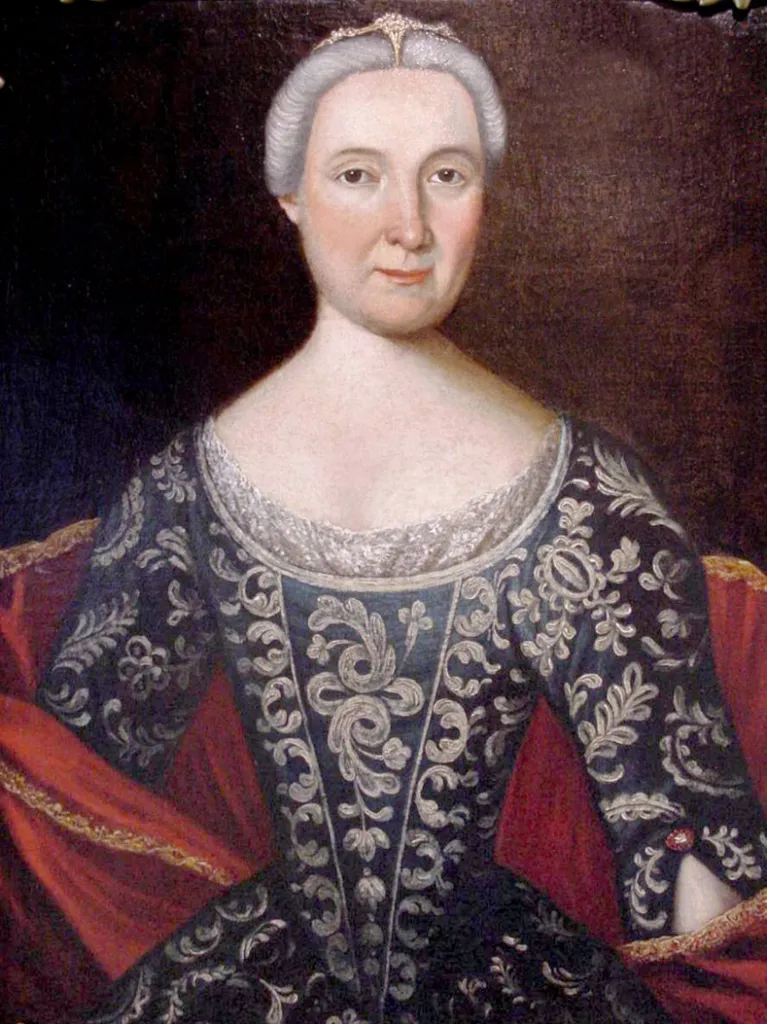
Portrait of Miss Hannong 1744, Musée Historique Haguenau.
Our hunch-backed Strasbourg examples however are original creations. With their rather thoughtful and serious expressions and decidedly masculine faces, it is difficult to read the intentions of the modeller. They do not seem obviously satirical, as is the case with many other figures of dwarfs, perhaps they portray a real person who was familiar to Strasbourg society.
A portrait of a Miss Hannong, and heiress of the ceramic dynasty, wearing a schnepp survives in the Musée Historique Haguenau.
We are very grateful to Jacques Bastian, the acclaimed expert on the ceramics of Strasbourg, for help with this entry.
Condition:
The figure with goblet: chips to base
The figure with basket: flask on base lacking, the flaking to black enamel on clogs and hat has been retouched
Provenance:
Ex. Collection: Christian Bonnin Collection (the one with goblet and perhaps both)
References:
https://www.costumesetcoutumes.alsace/2021/09/quand-lalsace-se-couronnait-dor-le-schnepper/
https://gallica.bnf.fr/ark:/12148/bpt6k10416153/f39.item
Guy Boucher, Alsace françoise ou Nouveau recueil de ce qu’il y a de plus curieux dans la ville de Strasbourg, (Strasbourg 1706)
Errol Manners, ‘The Early Sculptural Porcelain of François Barbin at Villeroy and Paris’, Journal of the French Porcelain Society, vol.VIII, 2020
Price: £ 17,500
[1] Musée National de la Céramique, Sèvres (MNC 14 100-1 and 14 100-2).
[2] Manners 2020, pp.73 – 75


